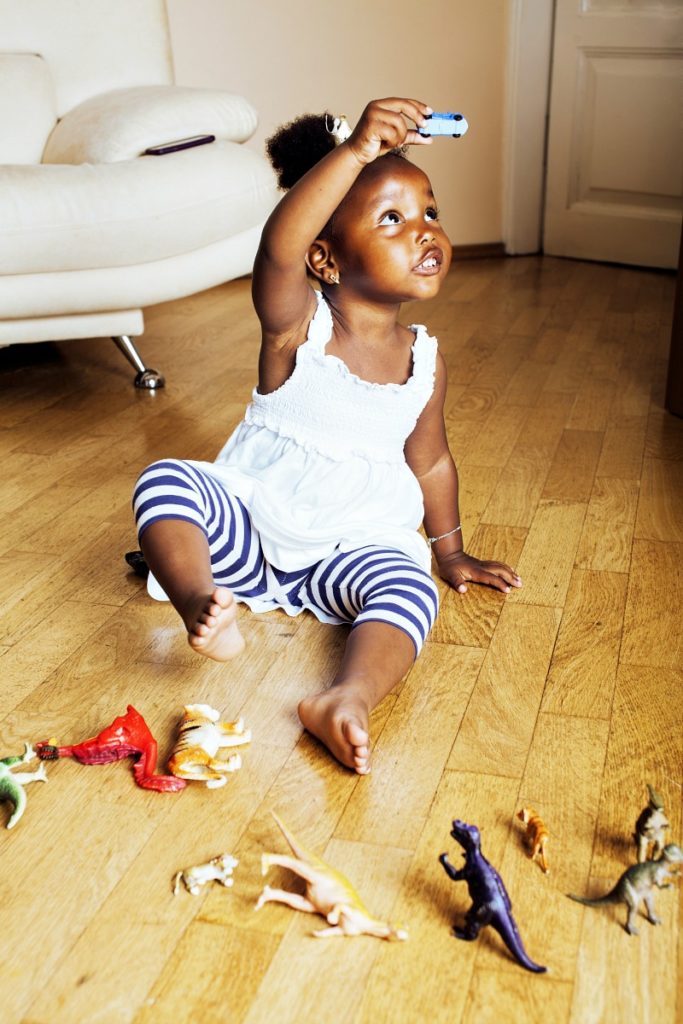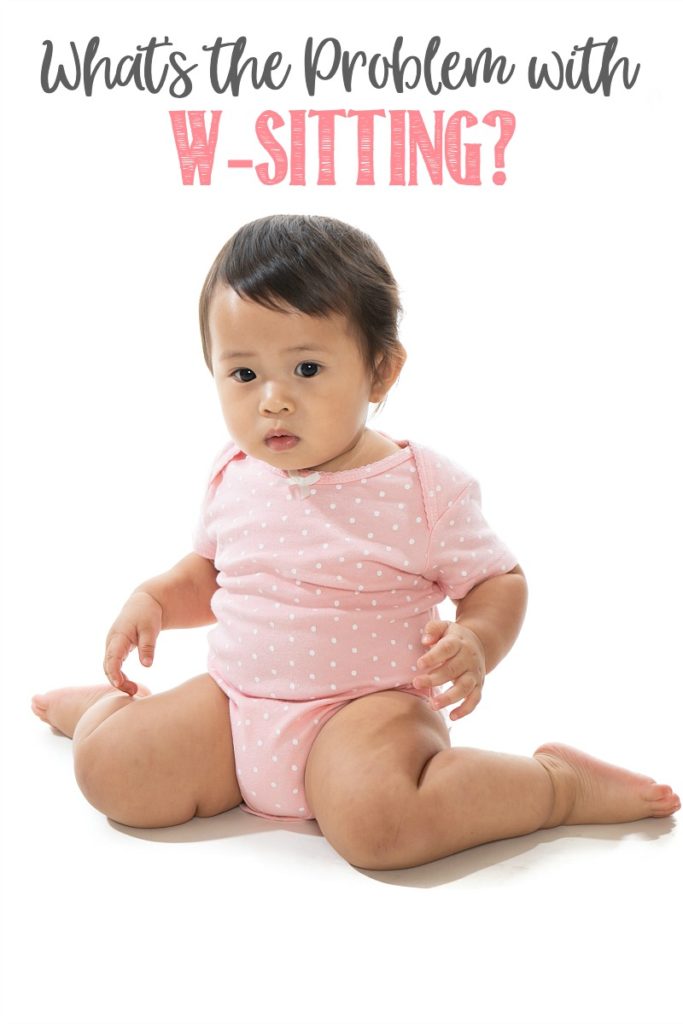Learn when to be concerned about W-sitting and what you can do about it. Easy tips that parents can follow.

Transitioning in and out of the W-sit position when playing on the floor is very common and part of typical development. As a paediatric physical therapist, I’m often asked by parents if this should be a position that they should try to correct. It’s not necessarily a straight ‘yes’ or ‘no’ answer, however, as there are a few things that need to be taken into consideration first. Here’s the low down on my thoughts about W-sitting.
What is W-Sitting?
W-sitting is a fairly common sitting position in younger children when a child sits on their bottom with their knees bent and feet positioned outside of their hips. When standing above your child looking down, you will see their legs and body make a ‘W’ shape.
Why Do Kids W-Sit?
Short periods of time in W-sitting can be considered a part of typical development and is nothing to be concerned about. Some kids, however, may start to become reliant on this position. Eventually it may become their preferred {and possibly only!} sitting position that they use when sitting on the floor. There are a few different reasons for this…
- For many kids, W-sitting is their most comfortable position and may just be habitual. For these kids, changing to alternative sitting positions {see ideas below} isn’t usually too much of a challenge. It’s often just a matter of some consistent reminders and a little practice.
- Other children may adopt w-sitting in order to compensate for weaknesses they have in their core muscles and hips. W-sitting provides them with a wider base of support during play and other activities so they don’t need to use their core muscles as much. Basically they get more stability with a lot less muscle activation.
- A smaller percentage of kids may prefer this position due to a structural difference of their hip joint called femoral anteversion. This is when the head and neck of the femur is rotated more forwards causing the hips to naturally turn more inwards. These children will likely also walk with their feet turned inwards.
What is the problem with W-Sitting?
Ideally with floor play, we want kids be able to easily move around, transition in and out of a variety of positions, and be able to play with their toys in a functional manner. W-sitting, however, limits a lot of these movements and strengthening opportunities that floor play can provide. When a child is in the W-sitting position, they have…
- Decreased core muscle and spinal extensor muscle activation.
- Decreased ability to rotate through the trunk and weight shift to each side.
- Minimal opportunities to challenge their balance reactions..
- More difficulties crossing midline.
- Increased backwards tilt of the pelvis

Long Term Issues Associated with W-Sitting
If your child just W-sits periodically, can easily transition in and out of this position, and will also use alternative sitting positions, there really isn’t a huge concern with W-sitting. For children that use this as their primary sitting position, however, W-sitting can lead to a variety of other issues over time. This could include…
- tight hip and leg muscles
- in-toeing when walking
- decreased lateral (side to side) and posterior balance reactions
- Inability to engage in play incorporating trunk rotation can limit the integration of the left and right sides of the body which can create difficulties with coordination.
- slouching and poor sitting posture
- difficulties with activities crossing midline and involving bilateral coordination
- difficulties with higher level motor skills
Alternative Sitting Positions to W-Sitting
If you’re noticing that your child is starting to prefer W-sitting over other sitting positions, encourage them to switch to other options – at least for the majority of the time. In general, the more varied positions your child uses, the better! There are many other sitting positions that you can try…
- criss-cross sitting (try to alternate which leg is on top)
- ring sitting (both legs bent with feet touching)
- side-sitting (knees bent, both feet on same side of body). Try to work on side-sitting to either side.
- long-sitting (legs straight out in front)
- kneeling directly on feet
- squatting. It’s a bonus that this also helps with lower extremity strengthening.
- lying on tummy propped on elbows
- sitting on a chair or low stool
- playing on hands and knees

What else can I do to help eliminate W-sitting?
In addition to encouraging alternative sitting positions, there are a few other things that can be done depending on your child’s underlying reason for W-sitting in the first place. Further evaluation from a physical therapist or pediatrician may also be helpful to develop the best strategies for your child if you’re not having success.
- For kids with a weak core, helping to build up core muscle strength will help to decrease their need to sit in a W position. {I’ll be positing more information on core strengthening for kids soon!}
- If your child W-sits due to muscle tightness or muscle imbalances, improving flexibility in the tight muscles and strengthening the lengthened {weakened} muscles can make it easier to adopt alternative sitting positions . Most frequently we see decreased flexibility through the hip external rotators, hamstrings, and lower calf muscles.
- It can be helpful to come up with a specific phrase or cue that you can use consistently with your child when you want them to change their sitting position. I often use “switch your feet”, “criss-cross-applesauce”, or just a light tap on their foot or leg. I try not to use the phrase “fix your legs” so it keeps it more positive.
The Take-Away
While W-sitting can be a problem if used as the primary sitting position, don’t worry if your child uses this position for short periods of time. If you’re starting to notice that it’s becoming more of a regular position, practice the alternative sitting positions and set up play activities that make it difficult for them to W-sit. Encouraging other gross motor movements such as jumping, running, climbing, and balance activities can also be helpful to promote core and hip strengthening.
What are your thoughts on W-sitting? Leave me any questions in the comments.

Leave a Reply